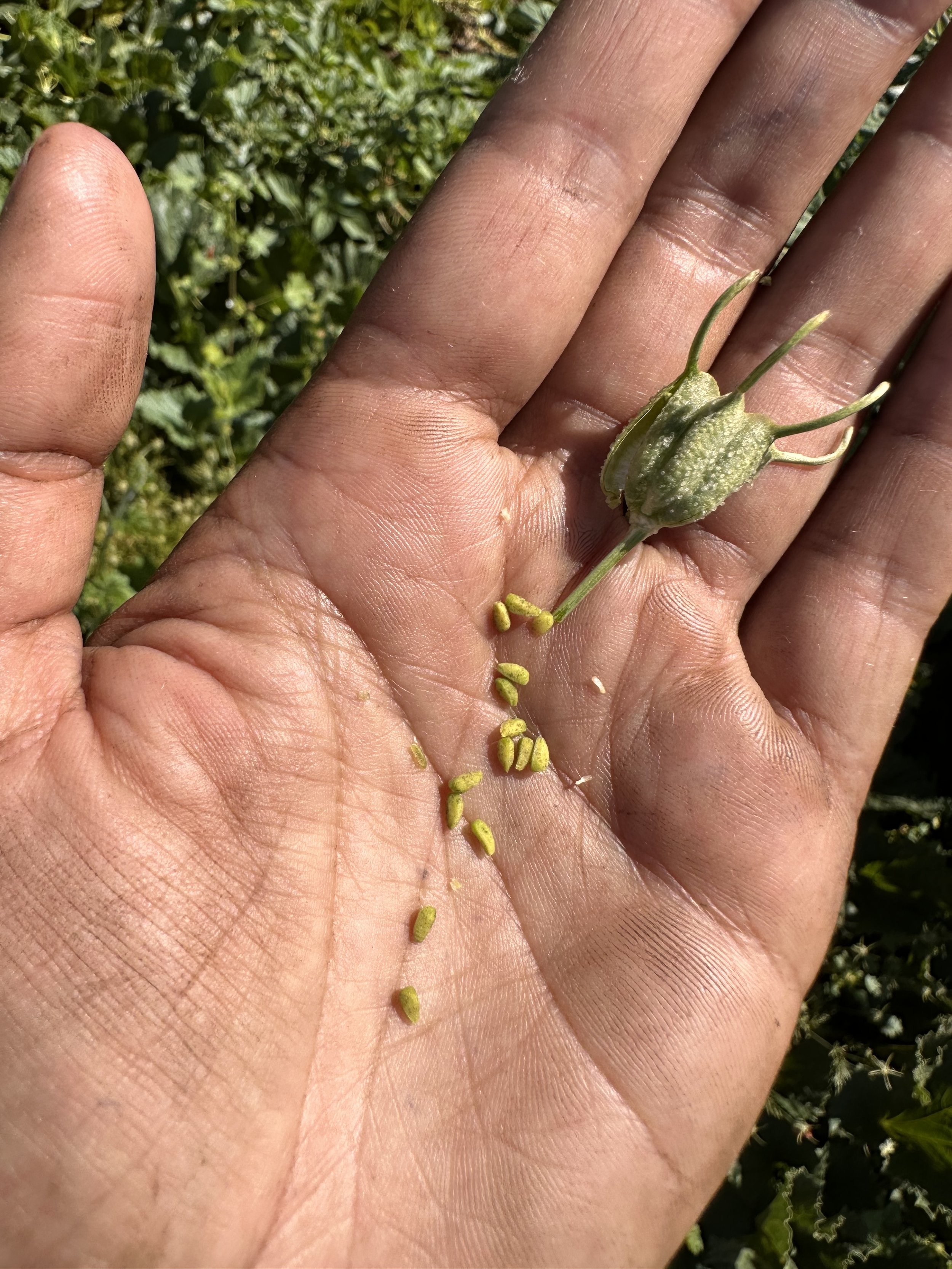
Siyah Daneh, Kalonji - Kula Nursery
Before I started growing Kalonji (Nigella Sativa) I used to grow the popular American garden plant 'Love in a Mist' (Nigella Demascena). I always admired the unique flowers and how attracted bees were to them when the plants were in full bloom. I also loved the fact that the flower heads turn into a seed pod that can be dried and used in dried floral arrangements. So when I learned Kalonji was in the same family as Love in a Mist I was so excited to watch it grow and go through the seed keeping process.
I grew up thinking Kalonji was onion seeds, because that's the literal translation of what it is called in urdu/hindi. I also grew up watching my mom cook with it and see my Nani eat 9 seeds every morning. She believes it's a powerful medicinal plant that can help prevent all types of diseases.
For 2 years in a row I tried seeding the plants in my greenhouse in cell trays and 6 packs. I thought it would be a fun plant to offer in the nursery but both years the plants did not grow well. They began to flower prematurely and became lanky. In colder climates or starting the seeds in cell trays earlier in the year may produce better plant starts but starting them in February must've been too late.
Last year Sama and I sprinkled 2 rows of seeds over a 100 foot long bed and raked the seeds in (in late May) on our farm. We had drip irrigation layed already and covered our rows with agribon until the first signs of germination. I've found that these plants take between 7-10 days to germinate when the weather is warm out. It's important to keep the soil moist until the seeds germinate. We liberally sprinkled the seeds onto the soil surface without much thought to spacing. I think the plants will grow to full maturity regardless of spacing but a few inches in between seeds will definitely be beneficial.
Once our seeds germinated, we removed the agribon and continued to irrigate via our drip irrigation lines. I made sure to weed around the plants while they were small. Once the plants grew larger they did a good job of suppressing the weeds themselves.
About 2 months later, in late July, the plants were in full bloom and it was a spectacle! It was mesmerizing to see the flowers in different stages of maturity and the bees hard at work attaching to the stamens and pollinating the flower. As the flower matures, the seed pod balloons up with the seeds maturing inside as well. The flowers have 5 white, delicate petals and too many stamens to count. Last summer there was a day where I sat amongst the nigella flowers for nearly an hour watching in awe at how stunning these plants are.
By early September the seed pods were fully dry on the plant and they were ready to be harvested. To harvest, I cut the plants down at the base and laid them out on a tarp on the ground to continue to mature and dry up. After a few weeks of drying I separated the seed pods from the rest of the plant and threw all the seed heads back on the tarp. I stepped on the seed heads until they were all broken open and the seeds had fallen out. From there I winnowed the seeds using a fan and a tarp underneath. The winnowing method basically looked like dropping the mixture of broken seed pods and seeds over a fan and allowing the fan to blow away the chaff and allowing the heavier seeds to fall on the ground on top of the tarp. I continued winnowing this way until the seeds were mostly free of its outer seed pod. Since harvesting and saving the seeds the biggest difference between these seeds and the seeds we buy packaged at the store is the scent. The saved seeds have a noticeably stronger scent and are much more flavorful.
Zee, Kula Nursery, 2024

Immature seed pod with immature seeds